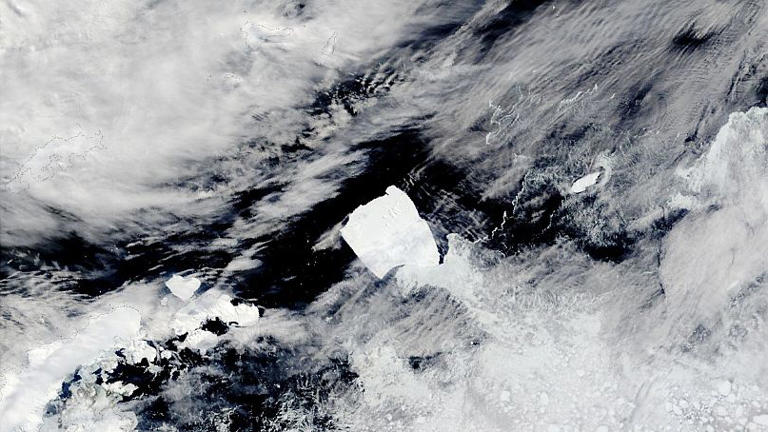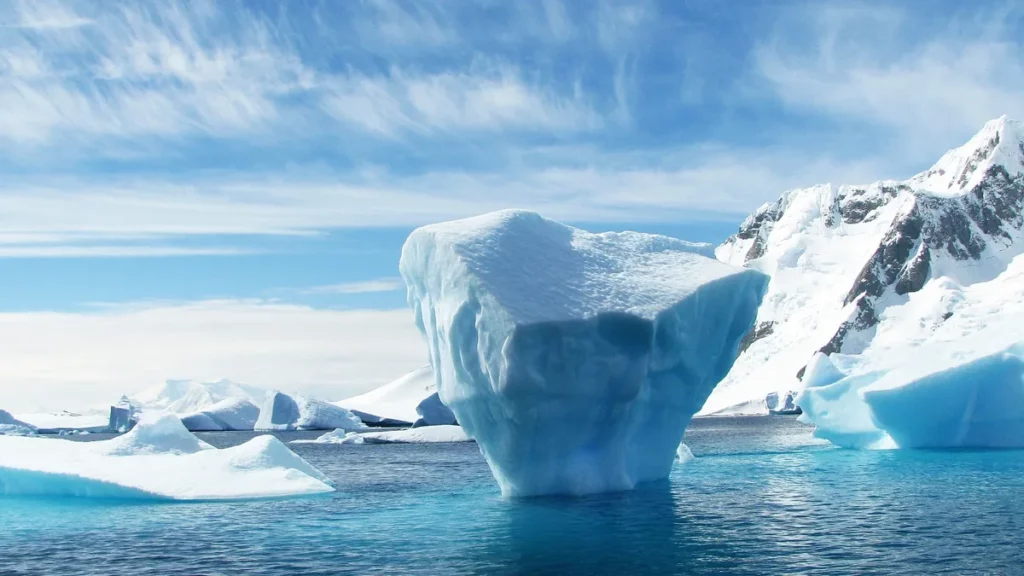A 19-kilometer fragment, almost the size of Paris, broke off from the world’s largest iceberg. This is an event that is happening for the first time and it is being tracked by satellite.
It is a huge ice shelf that is 80 kilometers long and covers an area of 3360 square kilometers. The block separated from Antarctica in 1986.
What the largest iceberg in the world is like
After decades in place, it is slowly heading from December towards the South Georgia Islands, carried by powerful ocean currents.
 One of the oldest icebergs in the world could collide.
One of the oldest icebergs in the world could collide.
This giant, named “A23a,” is one of the oldest in the world, twice the size of Greater London and weighing nearly a trillion tons.
Recent images taken by a European satellite show that a portion of approximately 19 km long and 6 km at its widest point broke off.
The fragment, almost 79 km2 according to satellite measurements, is now adrift in icy waters.
“It is undoubtedly the first significant part of the iceberg that has appeared to date,” oceanographer Andrew Meijers from the British Antarctic Survey, who closely follows the iceberg, told AFP.
According to Meijers, icebergs have deep fractures and, although this monumental specimen has shrunk over time and previously lost a much smaller piece, it had “held up well.”
In the past, other giant icebergs collapsed “relatively quickly, within a few weeks,” once they started losing large pieces.
However, experts consider it “difficult” to say if this fragmentation is evidence of a much larger ongoing change.
The iceberg is heading towards South Georgia
According to him, it is unlikely that the trajectory of A23 towards South Georgia, a crucial feeding area for seal and penguin species, will change due to the loss of this fragment.
 What could happen with the iceberg.
What could happen with the iceberg.
But additional fragmentation would reduce “the threat to wildlife,” as animals could more easily maneuver in the ocean between smaller ice blocks to find food, added the oceanographer.
Although it cannot be determined with certainty, the damage to the island would be severe. In 2004, a smaller iceberg, A38, collided with the site and caused penguin chicks and seal pups to starve on the beaches.
Their routes to food were blocked by huge pieces of ice.
Is it related to climate change?
The UN General Assembly declared 2025 as the year of the glacier, and World Glacier Day will be celebrated on March 21. Given that glaciers are threatened by melting due to the rise in ocean temperatures and air, it is likely that we will see more giant icebergs in the future.
However, A23a was created long before the recent years of extreme overheating. So, the formation of this iceberg and why it is moving now cannot be blamed on climate change.
Nevertheless, locals report that icebergs are becoming an increasingly significant threat.

